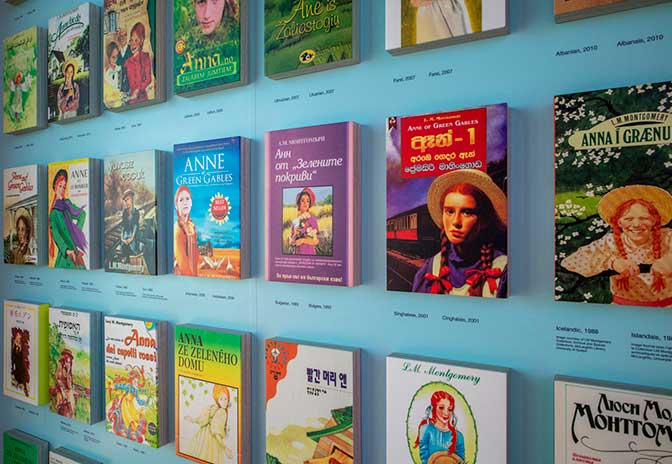Anne of Green Gables: Literary Classic
Anne of Green Gables: Literary Classic
Bonnie J. Tulloch
An Interesting Beginning
There is a beautiful parallel between the literary life of Anne of Green Gables (1908) and the life of its central character. Like Anne, Montgomery’s novel was unwanted. After sending it to several publishers and receiving their rejections, the author placed the manuscript in a hat box, a kind of temporary asylum for an abandoned dream.
“I put ‘Anne’ away in an old hat box in the clothes room, resolving that some day when I had time I would cut her down to the seven chapters of my original idea and send her to the aforesaid Sunday School paper.” 1
The Henry Holt Co. of New York noted that “their readers had found ‘some merit’ in the story but ‘not enough to warrant its acceptance.’” Thus began the novel’s journey to recognition by a literary community that, similar to the island community of Avonlea, could prove inhospitable to outsiders.
Looking back on the novel’s early history, one can be grateful that Montgomery was able to rediscover the potential of her manuscript. At some point, she took the story out of the hat box and read it through. She reflected in her journal: “Somehow, I found it rather interesting. Why shouldn’t other people find it so?"1
Unexpected Success
Montgomery’s instinct was correct.The spectacular success that followed the publication of Anne of Green Gables surpassed her expectations. In her 1917 autobiography, The Alpine Path she reflected on the experience:
When I wrote of the book succeeding or not succeeding, I had in mind only a very moderate success indeed, compared to that which it did attain. I never dreamed that it would appeal to young and old. I thought girls in their teens might like to read it, that was the only audience I hoped to reach. But men and women who are grandparents have written to tell me how they loved Anne, and boys at college have done the same.
Although Anne of Green Gables was not the story Montgomery had dreamed of writing, she realized that “… Anne has won love, where the ‘big’ book would probably have failed to win even interest.”2 People of all ages and backgrounds not only found Anne of Green Gables interesting, they fell in love with it.
The world’s attachment to it has lasted over one hundred years, with new editions and media adaptations testifying to its continued relevance. Among its readers are a list of acclaimed writers who affirm Montgomery’s influence on their imaginations, including Swedish children’s book author, Astrid Lindgren.
“Anne of Green Gables, oh, you, my unforgettable; forever you ride in the buggy next to Matthew Cuthbert beneath the blossoming apple trees of Avonlea! How I lived with that girl!” 3
Within a Canadian context, the writing of Jane Urquhart, Margaret Atwood, Margaret Laurence, Marian Engel, and Alice Monroe, not to mention those authors writing expressly for children, acknowledge the powerful influence of Montgomery on their own writing and writing careers.4
Many of these authors claim a special connection to Montgomery, including Urquhart, who was introduced to Anne of Green Gables by her mother. Urquhart’s short biography of Montgomery is filled with powerful reflections of her own reading life and reflections on the way Montgomery’s work influenced her own.
“Until then, the books she read were about children and animals in faraway England. The Anne books and the Emily books have electrified her own small life, added meaning and intensity even to the most ordinary of its attributes.” 5

Jane Urquhart's L.M. Montogmery in the "Extraordinary Canadians" series, 2012.
Classic Work
Anne of Green Gables is about finding love in an unexpected place, about the triumph of hope, and the transformative power of the human spirit. Publishers may not have wanted Anne, but readers needed her. Her story has never been out of print, and she continues to make “best,” “classic,” and “favourite” lists.6
The same something that kept Montgomery from “cut[ting] her down,”7 secures the novel’s and Montgomery’s place, not only in literary history, but in the hearts of readers worldwide.
1 See The Complete Journals of L.M. Montgomery, The PEI Years, 1901-1911, edited by Mary Rubio and Elizabeth Waterston, Oxford University Press, p. 173. Back
2 Montgomery, “How I Began to Write.” 1911. The L.M. Montgomery Reader Volume I: A Life in Print, edited by Benjamin Lefebvre, University of Toronto Press, 2013, p. 71. Back
3 Warnqvist, Åsa, “‘I experienced a light that became a part of me’: Reading Anne of Green Gables in Sweden,” in Anne Around the World: L.M. Montgomery and Her Classic, edited by Jane Ledwell and Jean Mitchell, McGill-Queen’s University Press, 2013, p. 235. Back
4 Theodore Sheckels, “Anne of Green Gables as Intertext in Post-1960 Canadian Women’s Fiction.” 100 Years of Anne with an ‘E’: The Centennial Study of Anne of Green Gables, edited by Holly Blackford, University of Calgary Press, 2009, p. 143 and Susan Meyer’s chapter in Anne Around the World: L.M. Montgomery and Her Classic, edited by Jane Ledwell and Jean Mitchell, 2013. Back
5 See Urquhart, L.M. Montgomery, Penguin, 2009. Back
6 Anne made the BBC’s “Big Read” Top 100 list in 2002, School Library Journal’s Top 100 “Chapter Books” list in 2012, and PBS’s “The Great American Read” list in 2018, among others. Back
7 Montgomery, The Complete Journals of L.M. Montgomery, The PEI Years, 1901-1911, edited by Mary Rubio and Elizabeth Waterston, Oxford University Press, p. 331. Back





